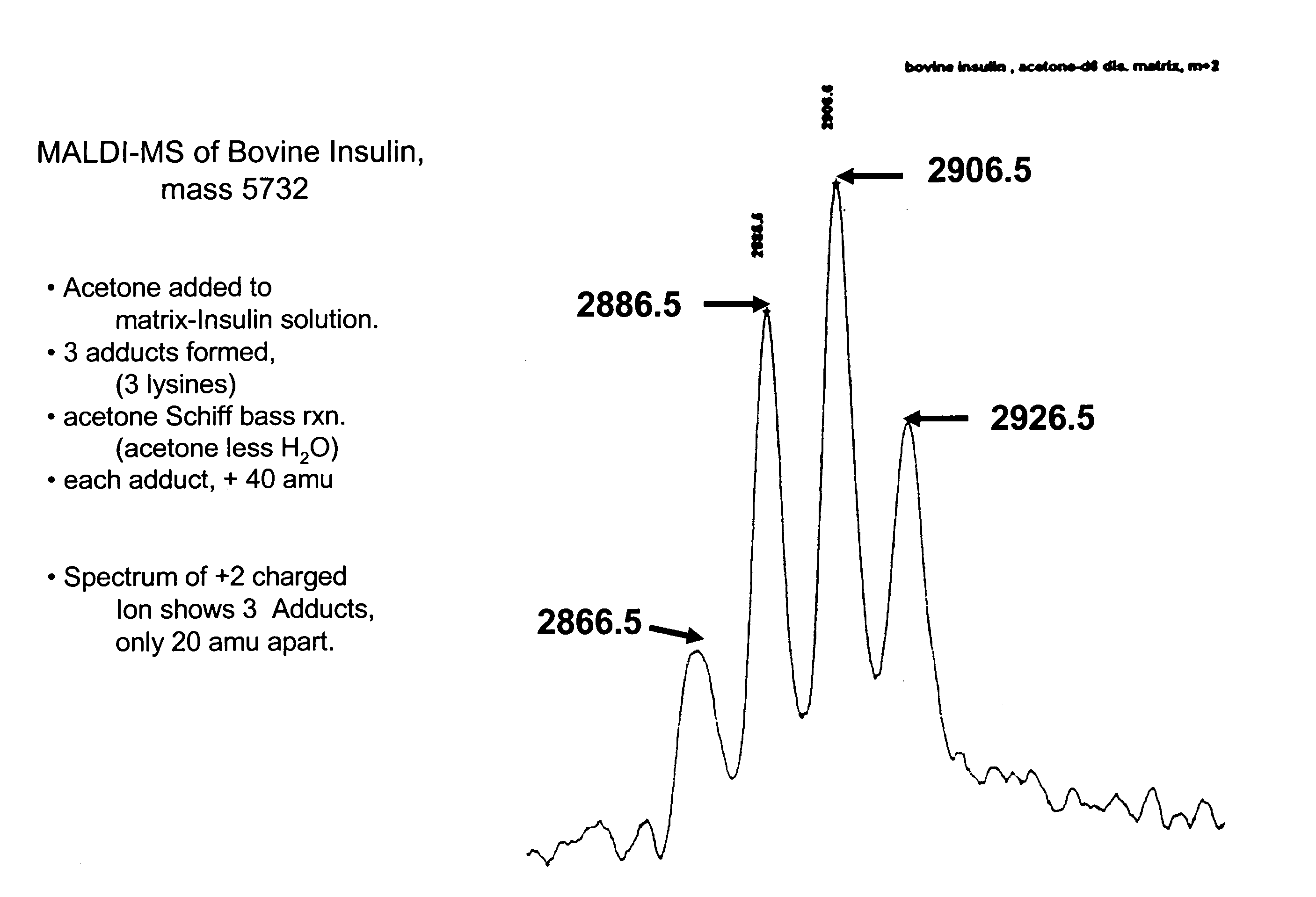Pattern recognition of whole cell mass spectra
a whole cell and mass spectra technology, applied in the field of whole cell mass spectra pattern recognition, can solve the problems of poor reproducibility of methods relying on the detection of biomarkers, particularly those utilizing mass spectrometry, and the drift of mass spectrometers, so as to achieve dramatic improvement in the accuracy of mass spectral identification of the components of a complex mixtur
- Summary
- Abstract
- Description
- Claims
- Application Information
AI Technical Summary
Benefits of technology
Problems solved by technology
Method used
Image
Examples
example 1
[0153] This example demonstrates that different adducts may form in a MALDI spectra from one molecular fragment in a sample.
[0154] It was hypothesized that MALDI MS applications that use ion intensity will benefit if spectra are pre-processed to sum all ions arising from a particular biomarker at a single m / z value, such as its singly protonated molecule (M+1). In Electrospray MS, a similar computational operation on spectra is known as Charge State Deconvolution.
[0155] To examine this hypothesis, a sample comprising bovine insulin was submitted to MALDI-MS. See, FIG. 1. Four peaks associated with insulin were observed, representing insulin and three different acetone fragment adducts. Acetone (M.W. 58) can react with aromatic amines to form an adduct in which water (M.W. 18) is lost (a Schiff Base reaction.). The adduct is 40 mass units heavier than the original amine. In FIG. 1 the four peaks represent unreacted insulin, and insulin with—respectively—one, two, or three of the av...
example 2
[0156] This example demonstrates that deconvolution of MALDI spectra data from complex biological samples improves reproducibility of the data.
[0157] To identify charge state of each ion cluster, we performed the following analyses on twenty-nine Salmonella enterica isolates (21 of serotype Heidelberg, 3 Anatum, 3 Worthington and 2 Muenster) from a turkey production environment. From the high mass end of the spectrum, we divided each ion peak by 2 or 3, look there for a corresponding peak. Ions at small integer dividends are then tabulated together with the largest, assumed to be a+1 charge state. Based on the assigned charge state, sum intensities (in the raw spectra) arising from nearby adducts or losses were calculated at their charge-state-predicted interval. The total around each same-charge-state cluster were added to the total for the same biomarker at its other identified charge states. Spectra were smoothed, the background was subtracted and then peaks were detected. Decon...
PUM
 Login to View More
Login to View More Abstract
Description
Claims
Application Information
 Login to View More
Login to View More - R&D
- Intellectual Property
- Life Sciences
- Materials
- Tech Scout
- Unparalleled Data Quality
- Higher Quality Content
- 60% Fewer Hallucinations
Browse by: Latest US Patents, China's latest patents, Technical Efficacy Thesaurus, Application Domain, Technology Topic, Popular Technical Reports.
© 2025 PatSnap. All rights reserved.Legal|Privacy policy|Modern Slavery Act Transparency Statement|Sitemap|About US| Contact US: help@patsnap.com



